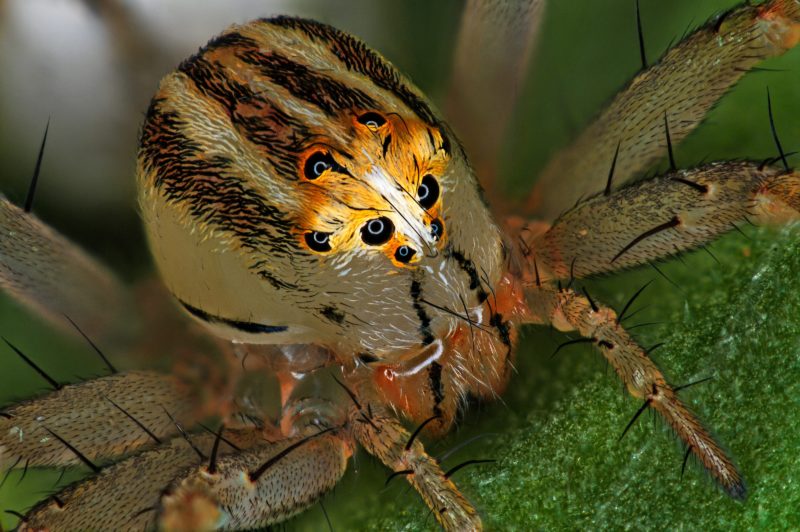2019 Photomicrography Competition


14th Place
Female Oxyopes dumonti (lynx) spider
Antoine Franck
- Affiliation
- CIRAD - Agricultural Research for Development
Saint Pierre, Réunion, France
- Technique
- Focus Stacking
- Magnifaction
- 1x (Objective Lens Magnification)
In Their Own Words
A Q&A with Nikon Small World winner Antoine Franck.
What is the subject matter of your winning image and why did you choose this image?
This is a close up of the face mask of the lynx spider, which is typical of this species. This picture reminds me of traditional Kabuki Japanese mask, which is graphically astonishing.
What are the special techniques and/or challenges faced in creating this photomicrograph?
This picture was used for the creation of a guide about auxiliary fauna in crop cultures. To make the picture useful for the edited guide, it was necessary to compose the frame with a particular point of view, showing many different and specific body parts of this spider.
What is your primary line of work?
I am an entomologist and photographer. My mission is to produce photographic databases on pests and auxiliary arthropods in the Indian Ocean.
How long have you been taking photographs through a microscope? What first sparked your interest in photomicrography?
I have been doing macrophotography for more than 30 years and I have been passionate about photomicrography for about eight years, thanks to the acquisition of the NIKON AZ100 in my department. Photomicrography allows the public to see organisms that are often very small but have a significant influence on the ecosystems of our planet.
Do you tend to focus your microscopy toward a specific subject matter or theme? If so, why?
My main theme is photography of terrestrial arthropods. I also photograph mushroom seeds and spores to illustrate publications and books for CIRAD researchers.
Why did you enter the Nikon Small World Photomicrography competition? What do you think of the competition?
This is, to my knowledge, the only competition to show the infinitely small to a wide scale, using both scientific and graphical composition.
 Share
Share Tweet
Tweet Pin-It
Pin-It